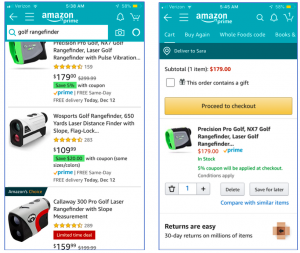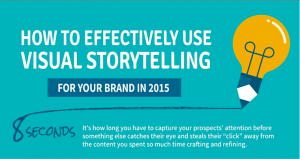Crafting a successful demand generation plan is never simple.
If it were easy, every B2B marketer would be driving remarkable full-funnel results.
The top game changers in B2B marketing are orchestrating complex demand generation strategies that span many different lead sources, marketing channels and targets. Not only are marketing programs challenged to scale their efforts, but they need to achieve balance as well.
If one aspect of your demand generation plan is off, you won’t see the results you want, even if the rest is pretty darn good.
Could you drive enough marketing-attributed deals without great content?
Can you hit your metrics if you’re using the wrong lead sources?
Unlikely.
At Integrate, we interact with a lot of B2B marketers, including well-known demand marketing pros like Maria Pergolino, CMO at Anaplan and Scott Fingerhut, WW VP Marketing Demand Generation at Elastic. We also engage with B2B marketers who are, by their own admission, struggling to transition to a full-funnel mindset and drive results.
These interactions have taught us that there are common pitfalls that plague virtually every B2B marketer who’s wielding a demand generation plan. If you think your peers are immune to any of these pitfalls, they aren’t. Avoiding these common pitfalls is a great first step in fool-proofing your demand generation campaigns.
5 Demand Generation Plan Pitfalls to Avoid
Pitfall #1: Insufficient Messaging Map
So, your content doesn’t attract the right leads or effectively nurture marketing-qualified leads (MQLs) into pipeline opportunities?
Chances are, you’ve run into the common pitfall of a nonexistent or insufficient messaging map:
- Maybe you have a content strategy, program objectives and buyer persona profiles but nothing to link these all together.
- It’s possible your content assets are abundant at the top of the marketing funnel, but weak in the middle or bottom.
- Perhaps you’ve never taken the time to connect your resources and key messages with each stage of your buyer’s journey.
If this is the case, you need a messaging map: a document that connects your key messages and content to relevant accounts, personas and buy stages. At minimum, it should address your awareness, consideration and decision phases, as well as the buyer’s pain points and priorities at each stage of the journey.
With a solid messaging map, B2B marketers can:
- Create the right content to fill in missing assets and gaps
- Repurpose and fine-tune existing assets to meet the needs of prospects and customers
- Identify weaknesses and strengths in campaigns and content
Pitfall #2: Limited Marketing Channels
Are you using the right marketing channels to reach your target personas?
Most demand generation marketers in 2018 are using a combination of owned and paid efforts across both digital and non-digital channels to generate and nurture their leads. It’s pretty rare that we encounter a program not using a combination of social media, inbound marketing, digital, third-party lead gen and live events and more.
Here’s where most demand generation plans go wrong: B2B marketers lack oversight at the top of the marketing funnel.
There’s no shortage of sources for leads, but marketers can’t effectively see where their results are coming from or effectively compare channels, at least not without heavy, time-consuming data crunching.
If your business is anything like the average B2B marketing program in 2018, you can’t get away with just one channel. Even organizations in narrow verticals can’t typically fill their pipeline with only inbound marketing leads. Chances are, you need to rely on co-sponsored webinars, live events, email, third-party partnerships, paid search and probably even more.
However, to maximize performance, you also need a solution that provides visibility and automation at the top of the funnel, allowing you to manage a growing number of channels for lead generation and multi-channel, full-funnel campaigns. Only then can you avoid this all-too-common pitfall.
Pitfall #3: Top-Funnel Strategy Neglect
It’s hard to scale your demand generation plan when you’re weighed down by inefficiencies at the top of the funnel.
Demand generation marketers aren’t just marketing at the top of the funnel anymore. They’re responsible for marketing throughout the sales and customer lifecycle. All too often, B2B marketing programs recognize the need to spend more time on middle- and bottom-of-funnel strategies, but are weighed down by the time-consuming, complex nature of their top-of-funnel efforts.
What gives?
Best-of-class demand marketers use technology to create top of funnel automation. The right software automates campaign management, centralizes your data sources and integrates your top-of-funnel efforts with your middle- and bottom-of-funnel activities.
Pitfall #4: Ignoring Lead Quality
Do you know the true cost of a bad lead?
Integrate’s own big data analysis of 3.64 million B2B lead records revealed the cost is pretty significant:
- 33%, or over 1.2 million records, contained duplicate data.
- 10% contained some kind of invalid data, such as a non-working email address or incorrect values or ranges – that’s more than 376,000.
- 45% qualified as non-actionable for a variety of reasons.
Looking beyond the obvious “ouch” factor of paying third-party sources for leads that won’t, or can’t, convert, imagine how many hours each month is wasted trying to manually standardize, deduplicate, validate, complete and upload these bad leads.
You can’t just dismiss third-party lead sources that provide you with occasional bad leads. Chances are, you also can’t afford to spend 20 more hours each month trying to manually populate missing leads before you upload leads to your marketing automation platform.
Demand marketers who manage to swerve safely around this pitfall typically turn to technology to solve this very common problem. Best-of-class organizations adopt software solutions to automate lead quality review and route new leads to the right sales reps or nurture tracks in real-time.
Pitfall #5: Lacking Adequate Performance Measurement
You can’t improve what you can’t measure.
Demand generation is an inherently data-informed approach to B2B marketing. Metrics are the grease for improvement, as well as effective alignment between marketing, sales and customer success teams. Marketers know the value of key performance indicators (KPIs) for demand generation such as funnel conversion rates, average deal size and cost per lead.
Demand generation marketers need tools for in-flight performance measurement and optimization. Your campaign budget goes a lot further toward boosting your marketing performance if you’re able to adjust campaign targets or content to meet the changing needs of your personas. Marketers also need technology that unifies the complex moving pieces in their demand generation strategy, enabling critical visibility into improving the failing pieces of diverse B2B marketing efforts.
Removing All Demand Generation Plan Success Barriers
The most effective B2B marketers aren’t necessarily superhuman, no matter what they may want you to think. In most cases, they’re simply smart about how and where they spend their time. Creating automation in your most time-consuming and error-prone processes enables you to spend more time on your demand generation plan. By spending less time coordinating spreadsheets and trying to wrangle poor-quality lead data, you can spend more time exceeding your B2B marketing metrics.
For a comprehensive, data-driven look at how your plan compares to the strategy at best-of-class B2B organizations, check out the free Integrate resource: B2B Demand Marketing Assessment Guide & Orchestration Workbook. It includes everything you need for objective insight into your program, including 12 customizable worksheets.
Business & Finance Articles on Business 2 Community
(47)






